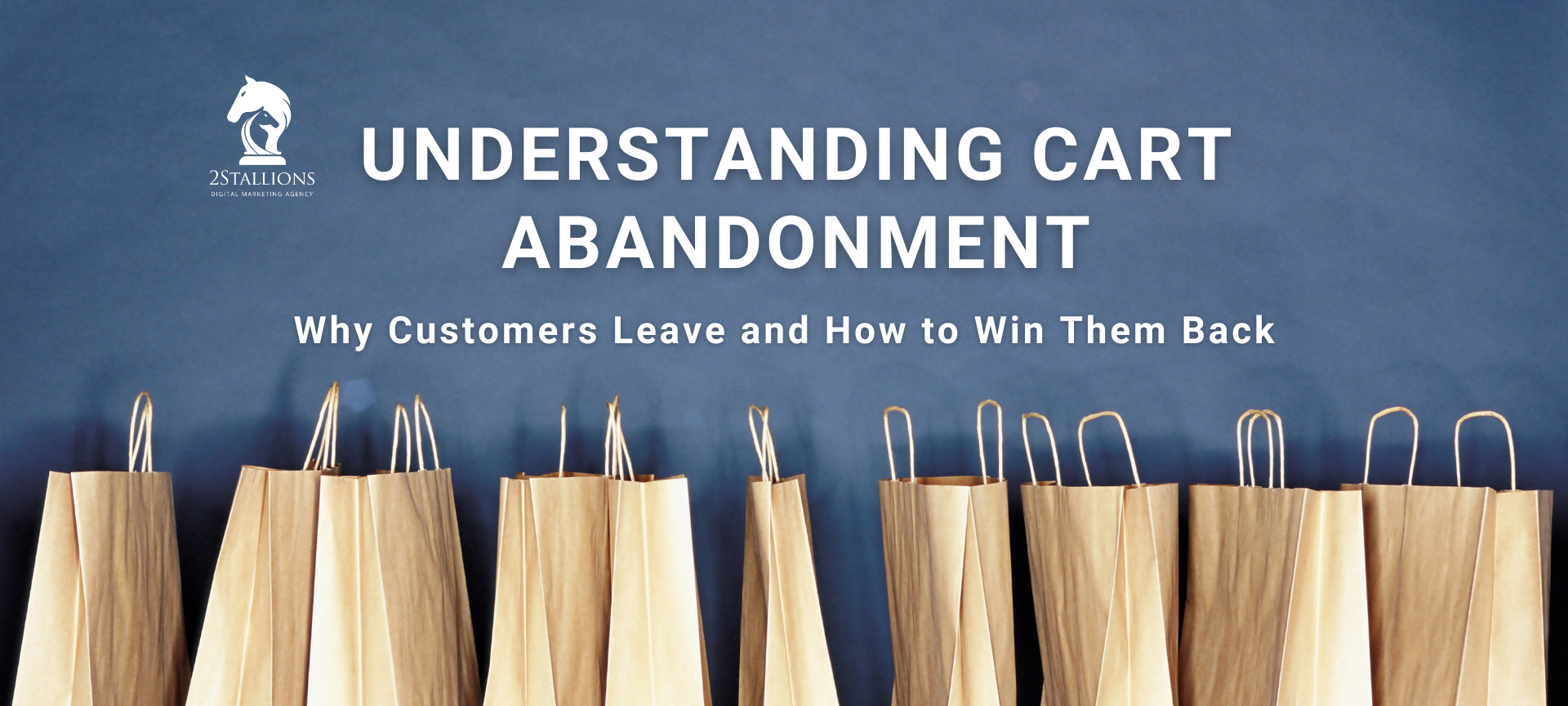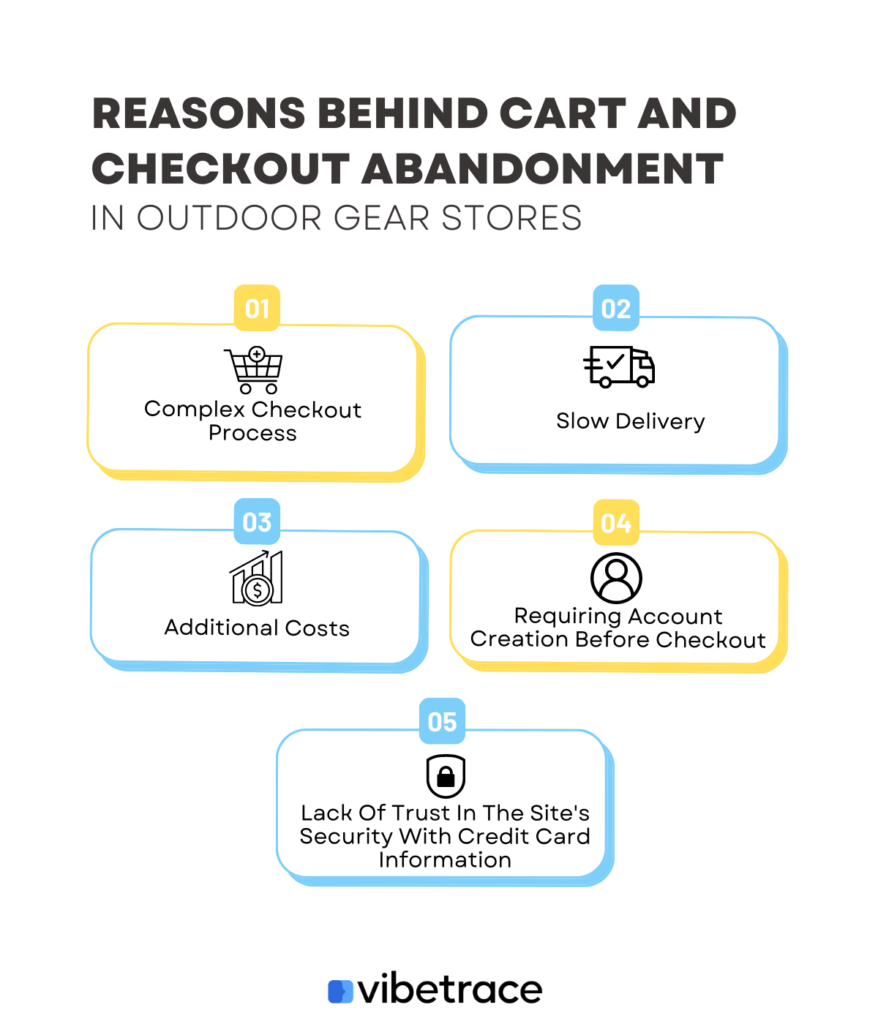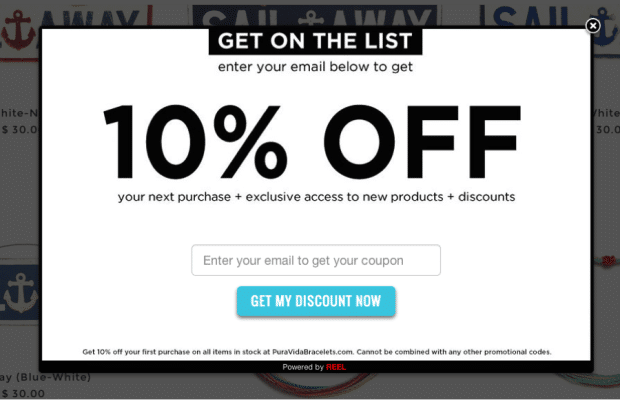Content
SHARE

In the world of e-commerce, cart abandonment is a common and frustrating phenomenon. It refers to adding items to shoppers’ shopping carts but leaving the website before completing the purchase. Cart abandonment can strongly impact businesses, resulting in lost sales and missed opportunities. However, by understanding the psychology behind cart abandonment and implementing effective strategies, businesses can reduce the occurrence of this frustrating phenomenon and win back customers.
The Psychology Behind Cart Abandonment
When it comes to online shopping, decision-making plays a crucial role in the purchasing process. Customers often go through a series of cognitive processes before deciding to make a purchase or abandon their carts. Research has shown that various factors contribute to cart abandonment, including psychological and emotional factors.
Understanding the psychology behind cart abandonment is essential for businesses looking to improve their conversion rates and customer retention strategies. By delving deeper into why customers abandon their carts, companies can tailor their online shopping experiences to meet the needs and expectations of their target audience.
The Role of Decision-Making in Online Shopping
Online shoppers are bombarded with numerous choices, and making decisions can be overwhelming. The fear of making the wrong choice or missing out on a better offer often leads to hesitation and ultimately, cart abandonment. To combat this, businesses should provide clear and concise information about their products or services, making it easier for customers to make informed decisions.
Moreover, implementing product recommendations based on customer preferences and past purchases can help streamline decision-making. By personalising the online shopping experience, businesses can reduce the likelihood of cart abandonment and increase customer satisfaction.
Emotional Factors Influencing Cart Abandonment
It’s important to note that on-page and off-page SEO go hand in hand. While on-page SEO ensures that your website is optimised for search engines by focusing on factors such as keyword optimization and site structure, off-page SEO helps to enhance your website’s authority and visibility by building external connections.
By combining both on-page and off-page SEO strategies, you can create a strong foundation for your website’s organic success. Now, let’s delve into the basics of link building and explore its significance in off-page SEO.
Link building is a fundamental aspect of off-page SEO. It involves acquiring hyperlinks from other websites to your own. These hyperlinks act as pathways that lead users from one website to another. Your website is more likely to be seen as reliable and authoritative by search engines the more relevant and high-quality backlinks it has.
There are various strategies you can employ to build backlinks. One popular method is guest blogging, where you write articles for other websites in your industry and include a link back to your site. This helps you establish yourself as an expert in your field and allows you to tap into the existing audience of the website you’re contributing to.
Another effective way to build backlinks is through social media. You can make your content more likely to be found and shared by others by sharing it on social media sites like Facebook, Twitter, and LinkedIn. This can lead to more backlinks as people find your content valuable and decide to reference it in their own articles or blog posts.
Emotions also play a significant role in cart abandonment. Customers may experience doubt, uncertainty, or even guilt when deciding whether to proceed with a purchase. By understanding and addressing these underlying emotions, businesses can create a more positive shopping experience that encourages customers to complete their purchases.
Furthermore, incorporating social proof, such as customer reviews and testimonials, can help alleviate customer concerns and build trust. By showcasing positive feedback from satisfied customers, businesses can reassure hesitant shoppers and instil confidence in their purchasing decisions.
(Source: Tagshop)
Identifying Common Reasons for Cart Abandonment
Link building is an integral part of off-page SEO and involves acquiring external links from other websites. As mentioned earlier, these backlinks act as validation for your website’s content and signal its importance to search engines.
To overcome cart abandonment, it is crucial to identify why customers abandon their carts. By addressing these issues, businesses can improve the overall shopping experience and potentially increase conversion rates.
Understanding customer behaviour is key to reducing cart abandonment rates. By delving into the psychology behind why customers abandon their carts, businesses can tailor their strategies to meet customer needs and expectations better. This insight can lead to more targeted solutions that address specific pain points, ultimately resulting in a more seamless shopping experience for customers.
Unexpected Costs and Their Impact
One of the most common reasons for cart abandonment is the unexpected costs associated with a purchase. Additional charges, such as shipping fees or taxes, can come as an unpleasant surprise for customers, leading them to abandon their carts. To mitigate this issue, businesses should provide clear and transparent pricing information upfront, including additional charges, to avoid any last-minute surprises that may deter customers.
Moreover, offering incentives such as free shipping thresholds or promotional discounts can help offset potential concerns about additional costs. By clearly communicating these offers throughout the shopping journey, businesses can encourage customers to proceed to checkout confidently, knowing they are getting the best value for their purchase.
The Influence of Website Design and User Experience
The design and user experience of an e-commerce website can greatly impact cart abandonment rates. Customers may lose patience and abandon their carts if a website is hard to use, has a complicated checkout procedure, or lacks trust cues. To enhance the user experience and reduce cart abandonment, businesses should invest in intuitive and user-friendly website design, ensuring the checkout process is streamlined and secure.
Furthermore, incorporating customer reviews, trust badges, and secure payment options can help build credibility and customer trust. A visually appealing and responsive website that caters to various devices and screen sizes can also enhance the overall shopping experience, making it easier for customers to browse products and complete their purchases seamlessly.
(Source: VibeTrace)
The Impact of Cart Abandonment on Businesses
Cart abandonment has more implications for businesses than just dropped sales. Cart abandonment is a prevalent issue in the world of e-commerce, with studies showing that the average cart abandonment rate is around 70%. This indicates that seven out of ten consumers who add products to their online shopping basket abandon it before purchasing. Understanding the reasons behind cart abandonment, such as unexpected shipping costs, complicated checkout processes, or lack of payment options, is crucial for businesses looking to tackle this problem effectively.
Financial Implications of Lost Sales
Lost sales due to cart abandonment directly impact a business’s bottom line. Every abandoned cart represents a missed opportunity for revenue. By improving conversion rates and reducing cart abandonment, businesses can recover these lost sales and increase their profitability.
Furthermore, the financial impact of cart abandonment extends beyond just the immediate loss of a sale. It also includes the resources and marketing expenses that were invested in acquiring that customer in the first place. In addition to losing out on possible sales, the initial investment made to draw in the buyer is also wasted when they leave their cart empty.
The Effect on Customer Relationships and Brand Perception
Cart abandonment can also hurt customer relationships and brand perception. Customers are less inclined to buy from a business again or refer others to it when they are irritated or dissatisfied with their buying experience. Businesses can increase trust and loyalty and improve their brand image by concentrating on offering outstanding customer service and addressing the problems that cause cart abandonment.
Moreover, in today’s competitive market, customers have high expectations regarding their online shopping experience. A single instance of cart abandonment can not only result in a lost sale but can also damage the reputation of a business. Consumers who have a bad experience are more likely to remember them and tell others about it, which could result in brand criticism. Therefore, businesses must strive to provide a seamless and user-friendly shopping journey to minimise cart abandonment rates and maintain a positive brand perception.
Strategies to Reduce Cart Abandonment
Reducing cart abandonment requires a proactive approach. By implementing effective strategies, businesses can create a more seamless and enjoyable shopping experience, increasing the likelihood of customers completing their purchases.
One key aspect of reducing cart abandonment is understanding the reasons behind it. Customers may abandon their carts due to unexpected costs, complicated checkout processes, or security concerns. Businesses can significantly reduce cart abandonment rates and improve customer satisfaction by addressing these pain points.
Enhancing the Online Shopping Experience
Businesses can enhance the online shopping experience by optimising their website’s performance and usability. This includes improving site speed, simplifying the checkout process, and ensuring the overall design is aesthetically pleasing and intuitive. By removing obstacles and providing a smooth shopping experience, businesses can reduce cart abandonment rates and increase conversions.
Moreover, offering multiple payment options and providing transparent information about shipping costs and delivery times can help build customers’ trust and encourage them to complete their purchases.
Implementing Effective Remarketing Techniques
Remarketing is a powerful tool for reaching out to customers who have abandoned their carts. By implementing remarketing strategies such as personalised email campaigns or targeted advertisements, businesses can remind customers of the items they left behind and entice them to return and complete their purchases. Offering incentives, such as discounts or free shipping, can further incentivise customers to reconsider their decision to abandon their carts.
Additionally, segmenting customers based on their browsing and purchasing behaviour can help businesses tailor their remarketing efforts and provide more relevant and personalised recommendations, increasing the chances of converting abandoned carts into completed purchases.
( Source: MonsterInsights )
Winning Back Customers After Cart Abandonment
Even after a customer has abandoned their cart, there are strategies businesses can employ to win them back.
The Power of Personalised Communication
Personalised communication is a key component of winning back customers. Sending personalised follow-up emails that address the specific items in the abandoned cart can remind customers of their initial interest. By offering assistance, answering questions, and providing incentives, businesses can re-engage customers and encourage them to complete their purchases.
Offering Incentives to Return and Complete the Purchase
Incentives can be highly effective in persuading customers to return and complete their purchases. Businesses can offer special promotions or discounts for customers who have abandoned their carts. These incentives can serve as a gentle nudge, reminding customers of the value they will receive by completing their purchase.
By understanding cart abandonment and implementing effective strategies, businesses can reduce the occurrence of this frustrating phenomenon and win back customers. By addressing the psychological and emotional factors that contribute to cart abandonment, identifying common reasons for abandonment, and implementing strategies to reduce abandonment rates, businesses can improve the overall shopping experience and increase conversion rates. Additionally, by focusing on winning back customers through personalised communication and offering incentives, businesses can recover lost sales and build enduring customer relationships.
Frequently Asked Questions About Understanding Cart Abandonment: Why Customers Leave and How to Win Them Back
What causes customers to abandon their shopping carts?
Common causes include unexpected costs (like shipping and taxes), complex checkout processes, concerns about payment security, insufficient payment options, and the requirement to create an account.
How can businesses reduce cart abandonment rates?
Businesses can reduce cart abandonment by streamlining the checkout process, offering transparent pricing, providing multiple payment options, enhancing site security, and allowing guest checkouts.
What are effective strategies to win back customers after they abandon their carts?
Effective strategies include sending timely cart abandonment emails, offering discounts or free shipping, improving customer support interactions, and retargeting ads to remind customers of what they’ve left behind.
Can offering more payment options impact cart abandonment rates?
Yes, offering a wider range of payment options can significantly reduce cart abandonment rates as it caters to different customer preferences and makes the checkout process more convenient.














